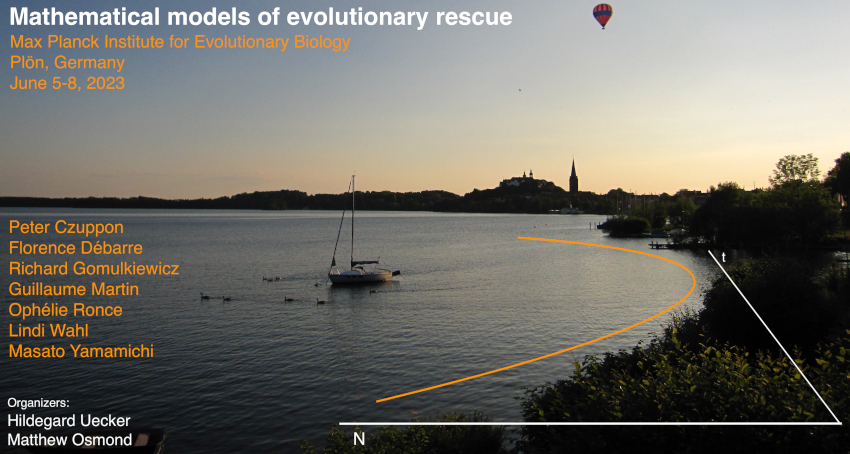Speaker
Description
Models of evolutionary rescue are predominantly applied in two fields:
conservation biology, ecology and epidemiology. We are presenting two models using branching processes that cover these two fields of application.
First, we study the probability of adaptation and evolutionary rescue in a spatially structured environment. A common assumption of spatial models is that emigrating individuals are distributed uniformly among
patches. Empirical studies do not support this dispersal scheme, but instead often find non-uniform dispersal schemes like matching habitat choice, where individuals preferentially immigrate into patches they are best adapted to. Implementing non-random dispersal schemes into models of local adaptation or evolutionary rescue reveals substantial differences to the uniform dispersal scheme. In our model, patches
change their local environment from 'good' to 'bad' over time. The wild type has a negative growth rate in bad environments so that the population will go extinct if it fails to adapt. We find that the probability of evolutionary rescue depends on the interplay between demography and local fitness. When increasing the dispersal rate, the relative importance of demographic effects increases compared to the effect from adaptation to the local environment. In dispersal regions where demographic effects dominate, we find that matching habitat choice
reduces the probability of evolutionary rescue when compared to the uniform dispersal scheme, and vice versa for dispersal rates where the effect of local adaptation is dominant.
In our second model, we study the evolution of antibiotic resistance.
Experimental and theoretical studies have investigated the drug dose that minimizes the risk of resistance evolution over the course of treatment of an individual, showing that the minimizing dose will either be the highest or the lowest drug concentration possible to administer.
However, no analytical results exist that help decide between these two extremes. To address this gap, we develop a stochastic mathematical model of bacterial within-host dynamics under antibiotic treatment. We explore various scenarios of density regulation (bacterial density affects cell birth or death rates), and antibiotic modes of action (biostatic or biocidal). We derive analytical results for the survival probability of the resistant subpopulation until the end of treatment,
which is the probability of evolutionary rescue when viewed from the point of view of the bacterial colony. The analytical solution of the survival probability allows the derivation of conditions for the concentration that maximizes the risk of resistance evolution.

